The recently released “2024 Global E-Waste Monitoring Report” by the United Nations Institute for Training and Research (UNITAR) and the United Nations International Telecommunications Union (ITU) sheds light on the concerning trend of electronic waste (e-waste) accumulation worldwide. The report reveals a staggering growth rate of 2.6 million metric tons per year in e-waste generation, emphasizing a critical issue that demands immediate attention.
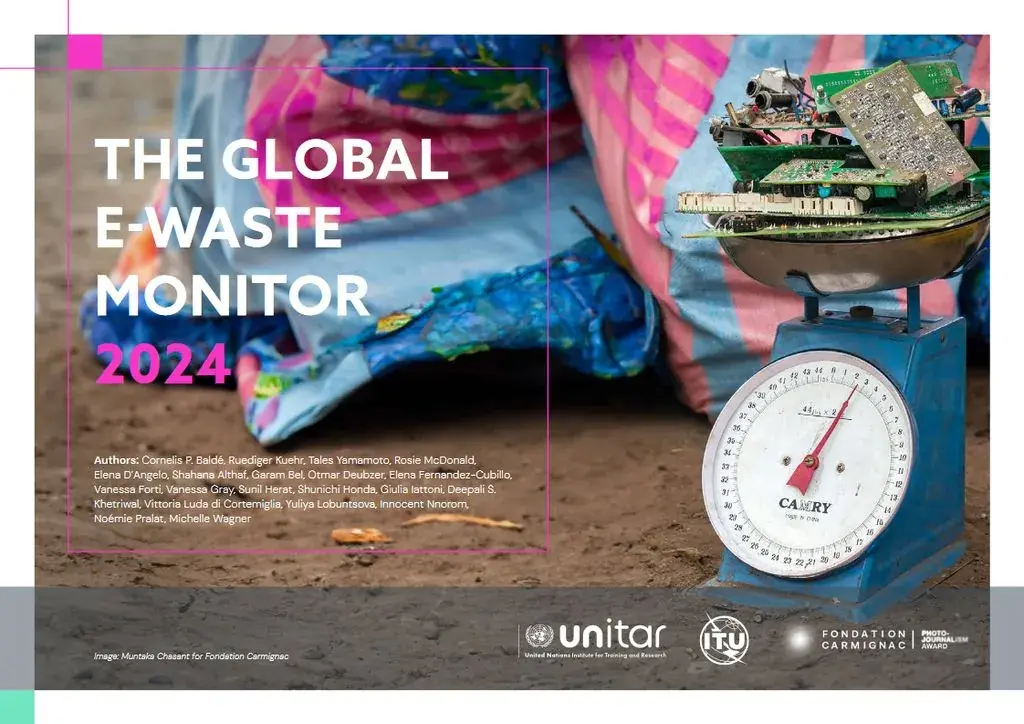
E-Waste Definition and Projection
E-waste, encompassing discarded devices with plugs or batteries like phones, TVs, and laptops, excludes waste from electric vehicles. The report projects a substantial increase in e-waste production, estimating that 62 million tons were generated in 2022 alone, equivalent to filling 1.55 million 40-ton trucks. By 2030, the annual e-waste output is anticipated to soar to a daunting 82 million tons.
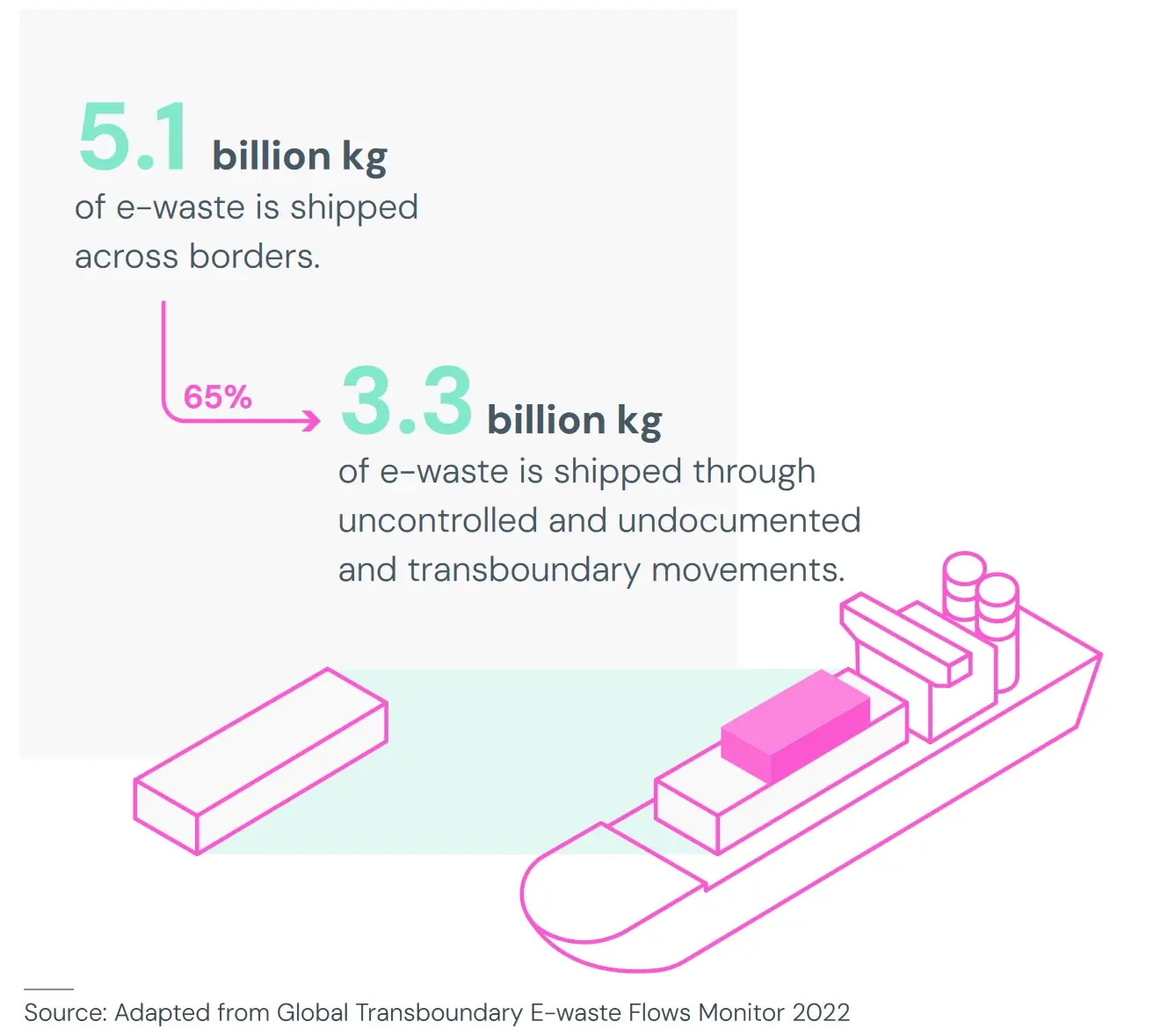
Recycling Challenges and Concerns
The report reveals that in 2022, despite the massive volume of e-waste, only 22.3% (13.8 million tons) enters official records. These are the wastes that undergo proper recycling. This highlights a significant gap between e-waste generation and recycling efforts, with the rate of recycling lagging behind at five times the generation rate. Projections suggest a further decline to 20% by the end of the decade due to technological constraints, limited repair options, shortened product life cycles, and the surge in electronic consumption.
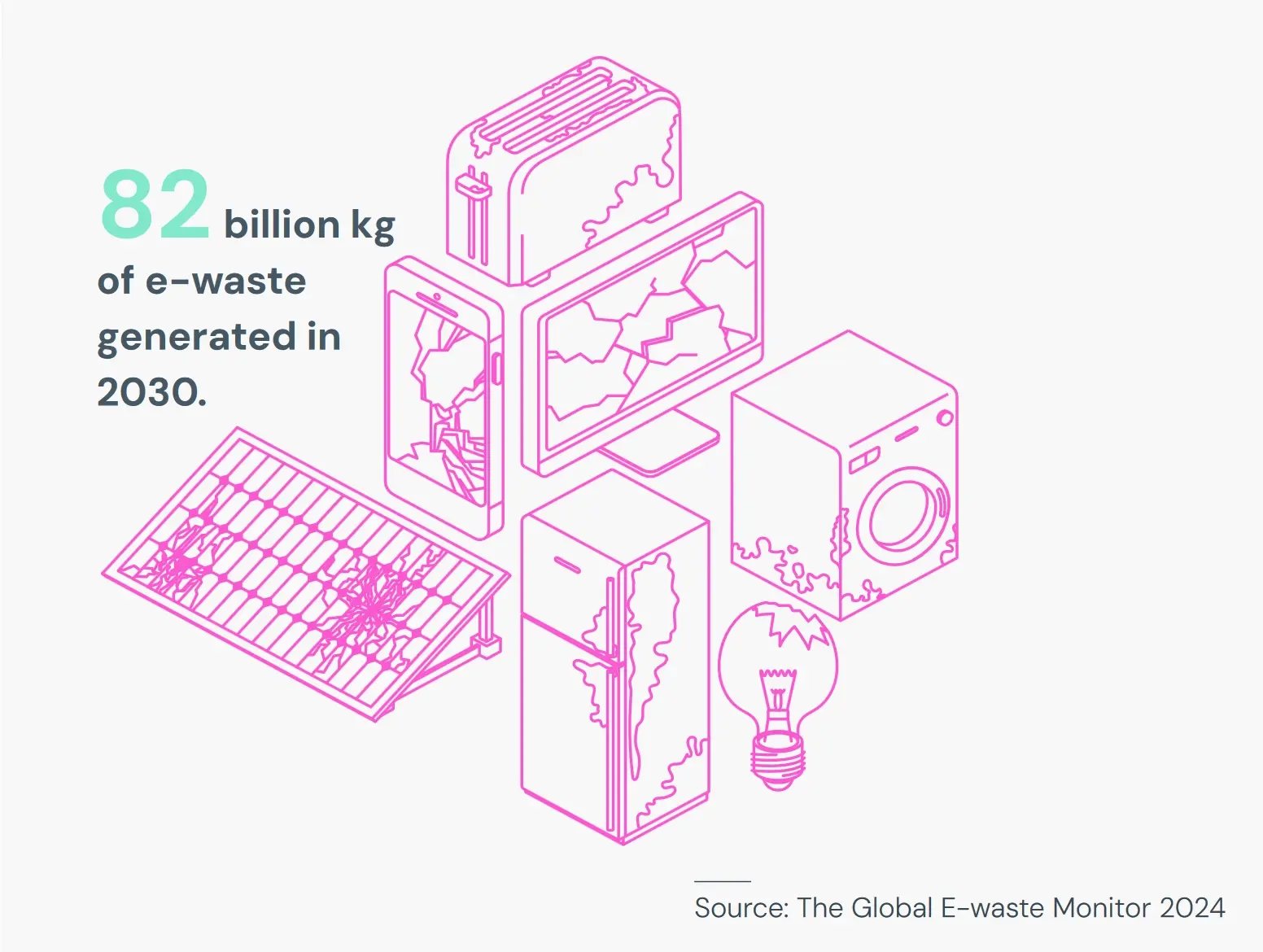
Global Disparities in E-Waste Management
E-waste generation and recycling rates exhibit notable variations across different regions. Europe leads in e-waste production per capita, with 17.6 kilograms, while the Americas follow closely with 14.1 kilograms. However, the formal collection and recycling rates paint a different picture, with Europe boasting a 42.8% rate, compared to 41.4% in Oceania, 30% in the Americas, 11.8% in Asia, and a mere 0.7% in Africa.
Gizchina News of the week
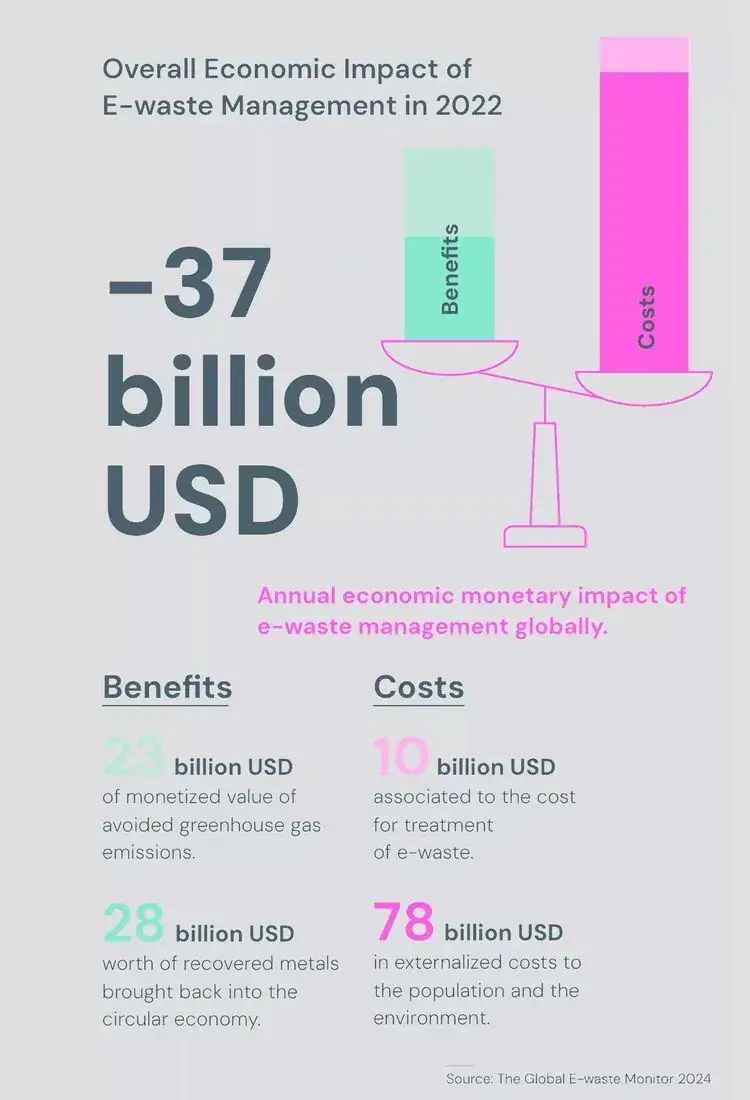
Call for Global Action
Cosmas Luckyson Zavazava, Director of the ITU Telecommunication Development Bureau, underscores the urgent need for global collaboration to address the escalating e-waste crisis. Highlighting the inadequacy of e-waste management measures in nearly half of the world’s countries and regions, Zavazava stresses the necessity for enhanced legislation, recycling mechanisms, and technological advancements to tackle this pressing issue effectively.
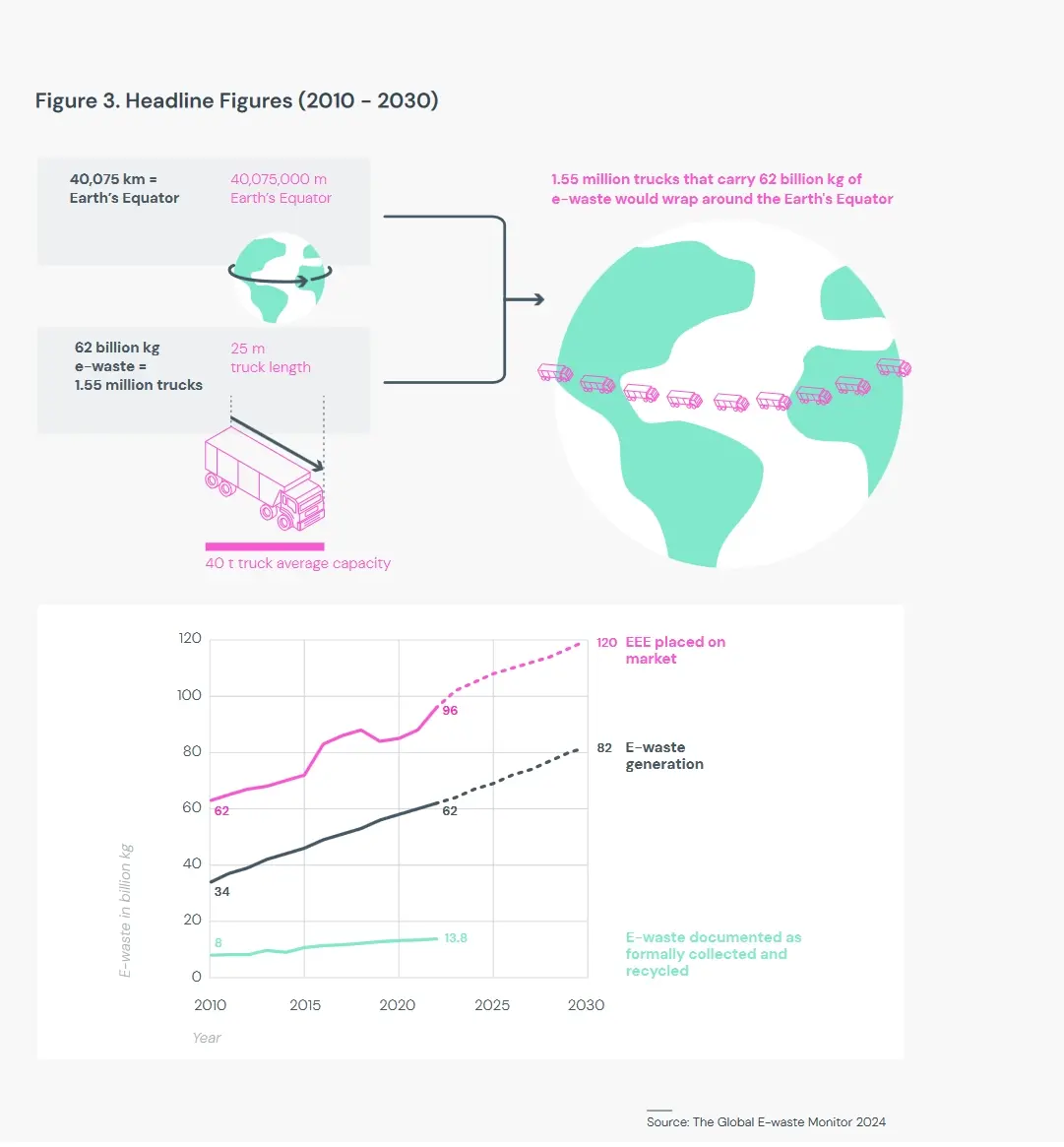
He said
New research shows that the global challenge posed by e-waste is only growing. Less than half of the countries and regions in the world have implemented e-waste management measures, which means that global efforts are needed to continuously improve laws and regulations, establish and improve recycling mechanisms, improve recycling technology, etc.
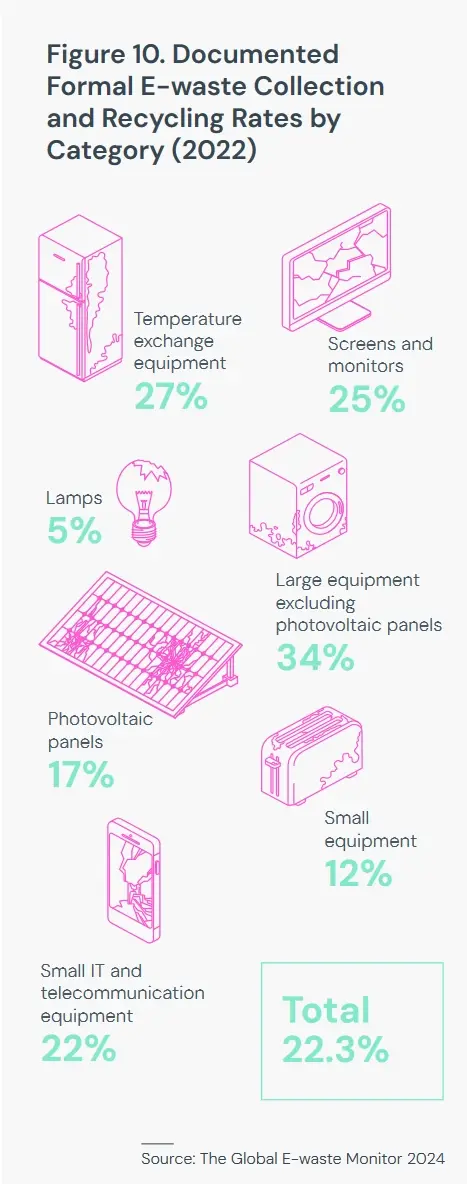
Economic and Environmental Implications
The report not only underscores the environmental impact of e-waste but also reveals its substantial economic costs. Estimates of the net monetary cost of e-waste are at a staggering $37 billion annually. Projections show that if there are no significant improvements in e-waste management policies and practices, this figure will escalate to $40 billion by 2030.
Conclusion
In conclusion, the UN report serves as a stark reminder of the escalating global e-waste crisis. It emphasizes the critical need for concerted efforts to enhance recycling rates. It also calls for the implementation of effective e-waste management strategies. This will help to mitigate the environmental and economic repercussions of unchecked e-waste generation. Only through collaborative action on a global scale can we hope to address this pressing challenge. If we tackle the issue, we can pave the way for a more sustainable electronic waste management future.




